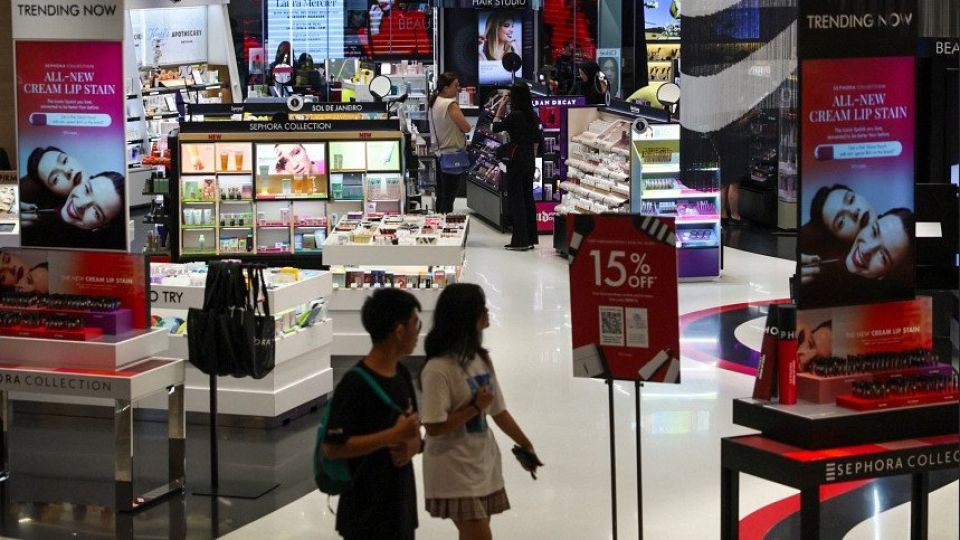October 29, 2024
SINGAPORE – A measure of inflation that represents key Singapore household expenses is forecast to decline to around 2 per cent by the end of the year – the lowest level since November 2021 – and ease further into 2025, said the Monetary Authority of Singapore (MAS).
The central bank’s estimate is for core inflation – which excludes private accommodation and transport costs to better represent Singapore household expenses – and comes after two months of higher-than-expected outcomes.
After falling to 2.5 per cent in July – the lowest level in more than two years – core inflation came in at 2.7 per cent in August and 2.8 per cent in September as retail and services inflation picked up pace.
However, MAS said in its biannual Macroeconomic Review report on Oct 28 that core inflation has come off significantly from the 5.5 per cent peak in January 2023 and, despite the volatility in monthly data, the declining trend should remain generally intact.
For the year as a whole, the central bank projected that core inflation will average 2.5 per cent to 3 per cent in 2024, down from 4.2 per cent in 2023. Meanwhile, all-items inflation is expected to come in around 2.5 per cent on average in 2024, compared with 4.8 per cent the year before.
MAS said the pent-up leisure travel demand has dissipated, limiting the extent to which travel-related services prices can pick up. Meanwhile, enhanced public healthcare subsidies that came into effect from October will also contribute to a step-down in essential services inflation in the remaining months of the year.
“In addition, crude oil prices, which were lower in July-to-September 2024 compared to the same period a year ago, will reduce electricity and gas inflation in the fourth quarter,” MAS said.
In 2025, lower import prices and a slower pace of increase in domestic wages should limit both core and all-items inflation within a range of 1.5 per cent to 2.5 per cent on average.
“The relatively low inflation forecast for next year partly reflects the dissipation of the GST (goods and services tax) hike effects on inflation. Should inflation momentum remain close to historical norms, core inflation is likely to average around the mid-point of the 1.5 per cent to 2.5 per cent forecast range for the year as a whole,” said MAS.
The cost of import of fuel and food has declined partly due to appreciation in the value of the Singapore dollar versus a basket of currencies of its major trading partners. MAS refers to this value as the Singapore dollar nominal effective exchange rate (S$Neer) policy band.
Unlike other central banks that use interest rates, MAS uses the S$Neer policy band to manage inflation. It guides the local dollar against a basket of currencies of its major trading partners to crimp the cost of imports.
However, it has to balance this against the risk of a too-strong Singdollar that would make exports more expensive to overseas markets and deter tourists from visiting Singapore.
MAS said inflation for Singapore’s major trading partners is forecast to broadly fall back to their pre-Covid-19 norms in 2025.
“Against this baseline of a benign external cost environment, especially in the region, Singapore’s imported cost pressures are expected to stay moderate next year.”
The central bank said domestic electricity, gas and food services inflation is likely to slow
further in 2025, while non-cooked food inflation is expected to rise only modestly. Services
inflation associated with holiday expenses should also ease as demand and supply in the
global tourism industry fully normalise.
Accommodation inflation should continue to decline gradually, as demand for rental accommodation is expected to remain relatively stable in 2025, having slowed in 2024 from its pace the year before, said MAS.
However, private transport inflation is expected to pick up, as certificate of entitlement premiums could continue to rise in the quarters ahead, given strong demand for cars.
Still, MAS warned that upside and downside risks to the inflation outlook remain, arising from shocks associated with intensifying geopolitical tensions or supply disruptions in global commodity markets, as well as the spillover from global growth outcomes to domestic labour market conditions.


